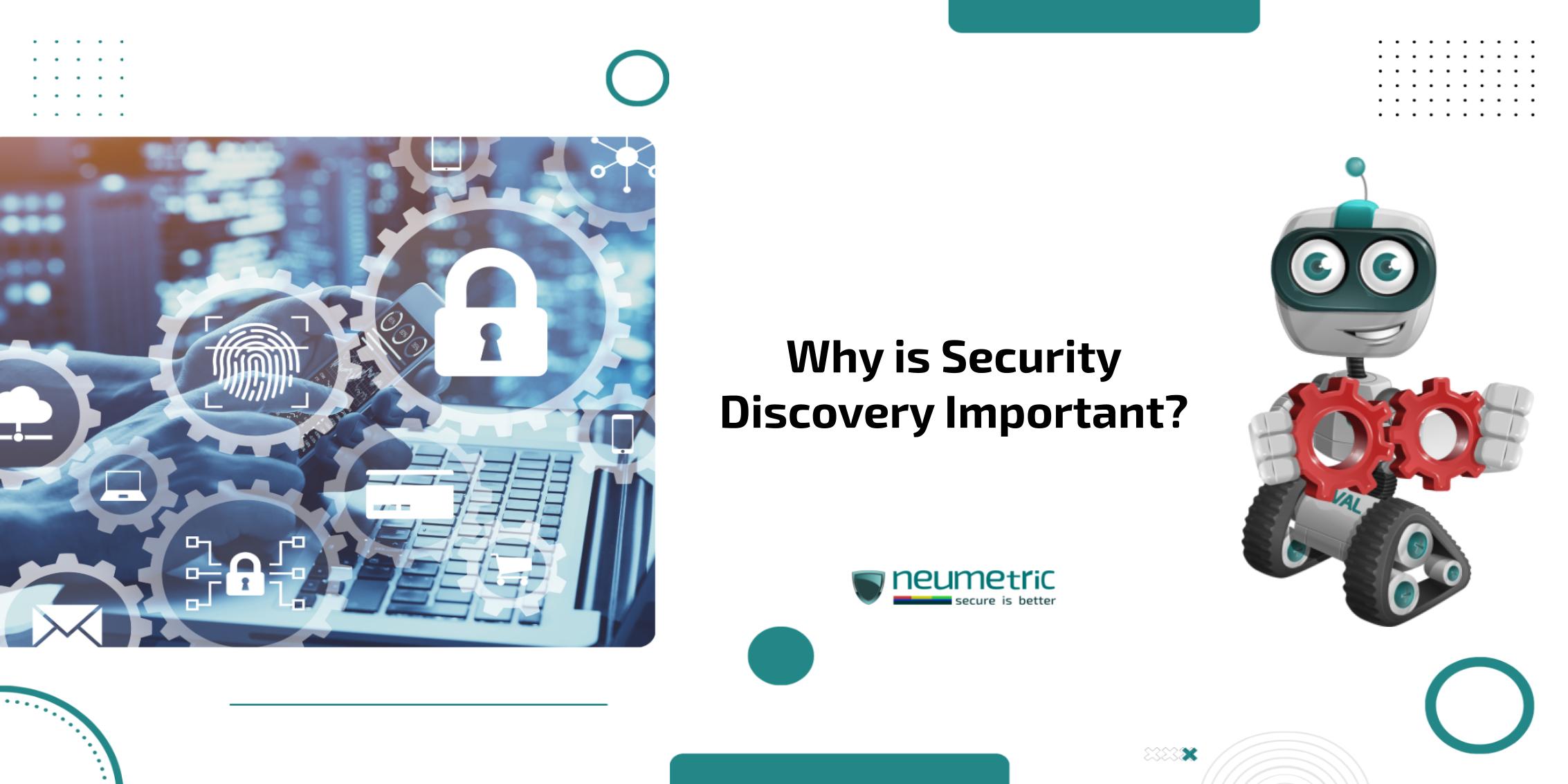Table of Contents
ToggleIntroduction
In an increasingly digital world, where cyber threats evolve at an alarming rate, the importance of robust cybersecurity measures cannot be overstated. Among the various strategies employed to safeguard digital assets, security discovery stands out as a critical component. This proactive approach to identifying vulnerabilities & potential threats before they can be exploited has become an indispensable tool in the cybersecurity arsenal. In this journal, we will delve deep into the world of security discovery, exploring its significance, methodologies & impact on the ever-changing landscape of digital security.
Understanding Security Discovery
What is Security Discovery?
Security discovery, at its core, is the process of proactively identifying vulnerabilities, weaknesses & potential security risks within an organization’s digital infrastructure. Unlike reactive security measures that respond to threats after they occur, security discovery aims to uncover & address potential issues before malicious actors can exploit them.
The Evolution of Security Discovery
The concept of security discovery has evolved significantly over the years. What began as manual penetration testing has grown into a sophisticated field encompassing automated tools, Artificial Intelligence [AI] & Machine Learning [ML] algorithms. This evolution has been driven by the increasing complexity of digital systems & the growing sophistication of cyber threats.
The Importance of Security Discovery in Modern Cybersecurity
Proactive Threat Mitigation
One of the primary reasons security discovery is crucial in today’s digital landscape is its proactive nature. By identifying vulnerabilities before they can be exploited, organizations can significantly reduce their risk exposure. This proactive approach is particularly important given the rapid pace at which new threats emerge.
Cost-Effective Security Management
Addressing security issues early through discovery processes is often far less expensive than dealing with the aftermath of a successful cyber attack. The costs associated with data breaches, system downtime & reputational damage can be astronomical, making the investment in security discovery a wise financial decision.
Compliance & Regulatory Requirements
Many industries are subject to strict regulatory requirements regarding data protection & cybersecurity. Security discovery plays a crucial role in ensuring compliance with these regulations by helping organizations identify & address potential vulnerabilities that could lead to non-compliance.
Continuous Improvement of Security Posture
Regular security discovery activities provide organizations with valuable insights into their security posture. This information can be used to continuously improve & update security measures, ensuring that defenses remain effective against evolving threats.
Key Components of Effective Security Discovery
Vulnerability Scanning
Vulnerability scanning is a fundamental component of security discovery. This process involves using automated tools to scan networks, systems & applications for known vulnerabilities. These scans can identify a wide range of issues, from outdated software to misconfigurations that could be exploited by attackers.
Penetration Testing
Penetration testing, often referred to as “ethical hacking,” involves simulating real-world attacks on an organization’s systems to identify vulnerabilities that may not be detected through automated scanning. This hands-on approach provides valuable insights into how an actual attacker might attempt to breach the organization’s defenses.
Code Review
For organizations that develop their own software, code review is an essential part of security discovery. This process involves examining source code to identify potential security flaws, such as input validation errors or insecure cryptographic implementations.
Social Engineering Assessments
Security discovery isn’t limited to technical vulnerabilities. Social engineering assessments evaluate an organization’s susceptibility to human-based attacks, such as phishing or impersonation. These assessments help identify weaknesses in security awareness & training programs.
Threat Intelligence Analysis
Incorporating threat intelligence into security discovery processes allows organizations to stay ahead of emerging threats. By analyzing current threat trends & attack patterns, organizations can proactively adjust their security measures to address new & evolving risks.
The Process of Security Discovery
Planning & Scoping
The first step in any security discovery initiative is careful planning & scoping. This involves defining the objectives of the discovery process, identifying the systems & assets to be evaluated & establishing the parameters of the assessment.
Information Gathering
Once the scope is defined, the next step is to gather information about the target systems & infrastructure. This may involve both passive reconnaissance (such as analyzing publicly available information) & active information gathering techniques.
Vulnerability Analysis
With the necessary information in hand, the security discovery team can begin analyzing the target systems for vulnerabilities. This typically involves a combination of automated scanning & manual analysis techniques.
Exploitation & Verification
In some cases, particularly during penetration testing, the discovery process may involve attempting to exploit identified vulnerabilities to verify their severity & potential impact.
Reporting & Remediation
The final stage of security discovery involves compiling a comprehensive report of the findings & providing recommendations for remediation. This report serves as a roadmap for addressing identified vulnerabilities & improving overall security posture.
Challenges in Security Discovery
Keeping Pace with Evolving Threats
One of the biggest challenges in security discovery is the constant evolution of cyber threats. New vulnerabilities & attack techniques emerge regularly, requiring continuous updates to discovery methodologies & tools.
False Positives & Negatives
Automated security discovery tools can sometimes generate false positives (identifying non-existent vulnerabilities) or false negatives (failing to identify actual vulnerabilities). Balancing the sensitivity of these tools to minimize errors while maintaining effectiveness is an ongoing challenge.
Resource Constraints
Effective security discovery requires significant resources, including skilled personnel, specialized tools & time. Many organizations struggle to allocate sufficient resources to these activities, particularly when faced with competing priorities.
Scope & Scale
As organizations’ digital footprints grow, so does the scope of security discovery efforts. Ensuring comprehensive coverage across increasingly complex & distributed systems can be a daunting task.
The Future of Security Discovery
Artificial Intelligence [AI] & Machine Learning [ML]
The integration of AI & Machine Learning into security discovery processes is likely to accelerate in the coming years. These technologies have the potential to dramatically improve the speed & accuracy of vulnerability detection & analysis.
Automated Remediation
As security discovery becomes more sophisticated, we can expect to see increased automation in the remediation process. This could include systems that automatically apply patches or adjust configurations in response to discovered vulnerabilities.
Continuous Discovery
The future of security discovery is likely to move towards continuous, real-time assessment rather than periodic evaluations. This shift will enable organizations to identify & address vulnerabilities as they emerge, rather than waiting for scheduled assessments.
Integration with DevSecOps
As more organizations adopt DevSecOps practices, security discovery is likely to become more tightly integrated with the software development lifecycle. This integration will help ensure that security is considered at every stage of development, from initial design to deployment & maintenance.
Best Practices for Implementing Security Discovery
Establish a Comprehensive Security Discovery Program
Develop a structured program that incorporates various discovery techniques, including vulnerability scanning, penetration testing & code review. Ensure that this program is aligned with your organization’s overall security strategy & business objectives.
Prioritize Vulnerabilities
Not every vulnerability bears the same amount of danger. Implement a system for prioritizing discovered vulnerabilities based on their potential impact & likelihood of exploitation. This will help ensure that the most critical issues are addressed first.
Conduct Regular Assessments
Security discovery should not be a one-time event. Establish a regular schedule for conducting assessments to ensure that your security posture remains strong in the face of evolving threats.
Foster a Security-Conscious Culture
Effective security discovery extends beyond technical measures. Promote a culture of security awareness throughout your organization, encouraging employees to report potential vulnerabilities & participate in security training programs.
Leverage Automation
While manual analysis remains important, leveraging automated tools can significantly enhance the efficiency & coverage of your security discovery efforts. Invest in high-quality automated scanning & analysis tools to complement your manual processes.
Collaborate with the Security Community
Engage with the broader security community through forums, conferences & information-sharing initiatives. This collaboration can provide valuable insights into emerging threats & best practices for security discovery.
Conclusion
In an era where cyber threats are constantly evolving & becoming more sophisticated, security discovery has emerged as a critical component of modern cybersecurity strategies. By proactively identifying vulnerabilities & potential risks, organizations can significantly enhance their ability to protect their digital assets & maintain the trust of their stakeholders.
The importance of security discovery extends beyond mere compliance or risk mitigation; it represents a fundamental shift in how organizations approach cybersecurity. Rather than waiting for attacks to occur & then responding, security discovery empowers organizations to take a proactive stance, continuously improving their defenses & staying one step ahead of potential threats.
As we look to the future, the role of security discovery is likely to become even more crucial. With the increasing complexity of digital systems & the growing sophistication of cyber attacks, organizations that fail to prioritize security discovery may find themselves vulnerable to devastating breaches. On the other hand, those that embrace comprehensive security discovery practices will be better positioned to navigate the challenges of an increasingly digital world, safeguarding their assets, reputation & future success.
In conclusion, security discovery is not just important—it is indispensable. As technology continues to advance & cyber threats evolve, the ability to proactively identify & address vulnerabilities will be a key differentiator between organizations that thrive in the digital age & those that fall victim to its risks. By investing in robust security discovery practices today, organizations can build a stronger, more resilient foundation for tomorrow’s digital landscape.
Key Takeaways
- Security discovery is a proactive approach to identifying vulnerabilities before they can be exploited by malicious actors.
- Effective security discovery encompasses various techniques, including vulnerability scanning, penetration testing & code review.
- Regular security discovery activities are essential for maintaining a strong security posture in the face of evolving threats.
- Challenges in security discovery include keeping pace with new threats, managing false positives & negatives & allocating sufficient resources.
- The future of security discovery is likely to involve increased automation, AI integration & continuous assessment methodologies.
- Implementing a comprehensive security discovery program requires a combination of technical tools, skilled personnel & a security-conscious organizational culture.
Frequently Asked Questions [FAQ]
What is the difference between security discovery & penetration testing?
While security discovery is a broad term that encompasses various techniques for identifying vulnerabilities, penetration testing is a specific method within security discovery. Penetration testing involves actively attempting to exploit vulnerabilities to assess the effectiveness of an organization’s defenses, while security discovery may also include passive techniques like vulnerability scanning & code review.
How often should an organization conduct security discovery activities?
The frequency of security discovery activities depends on various factors, including the organization’s size, industry & risk profile. However, as a general rule, comprehensive assessments should be conducted at least annually, with more frequent targeted assessments for critical systems or in response to significant changes in the IT environment.
Can security discovery guarantee that an organization won’t be hacked?
While security discovery is a crucial component of a robust cybersecurity strategy, it cannot provide an absolute guarantee against all potential attacks. However, regular & thorough security discovery activities can significantly reduce an organization’s risk exposure & improve its overall security posture.
What skills are necessary for a career in security discovery?
A career in security discovery typically requires a strong foundation in IT & cybersecurity principles, as well as specific skills in areas such as network protocols, operating systems & common vulnerabilities. Additionally, analytical thinking, problem-solving skills & the ability to stay current with evolving threats & technologies are crucial.
How does security discovery fit into a broader cybersecurity strategy?
Security discovery is a critical component of a comprehensive cybersecurity strategy, providing the foundation for other security measures. By identifying vulnerabilities & potential threats, security discovery informs decisions about where to allocate resources, which security controls to implement & how to prioritize remediation efforts.





